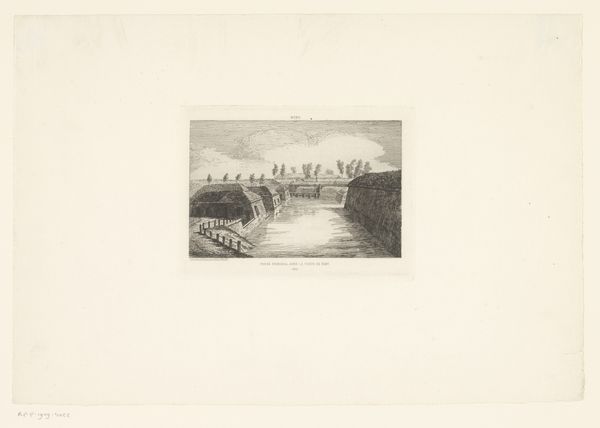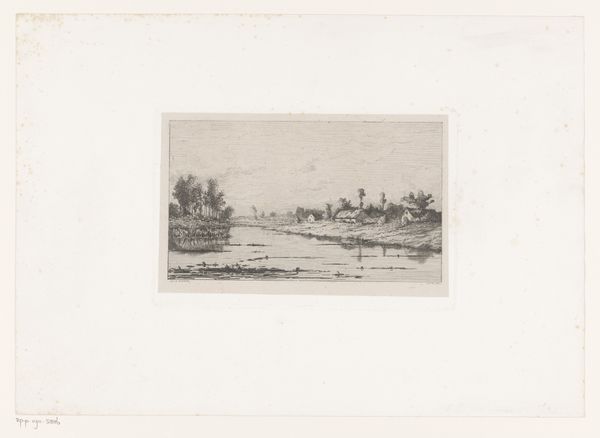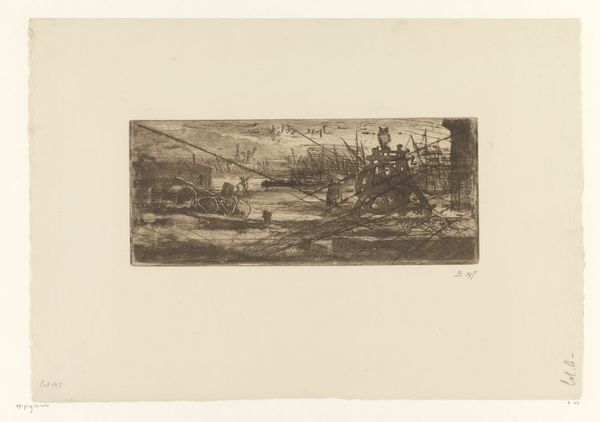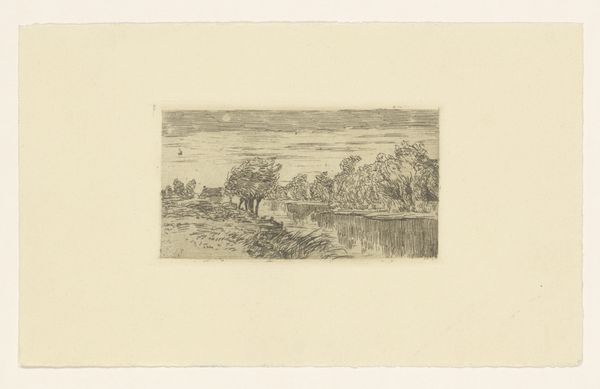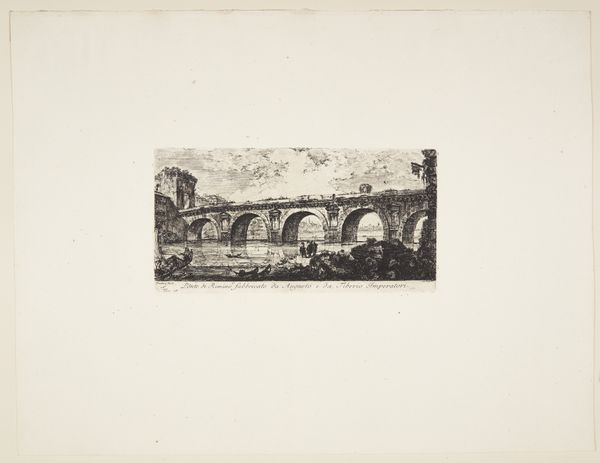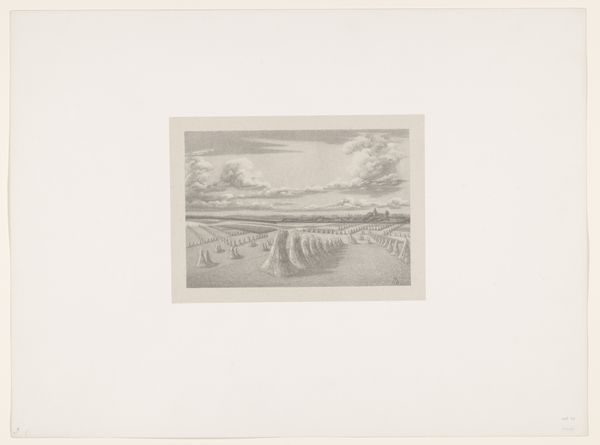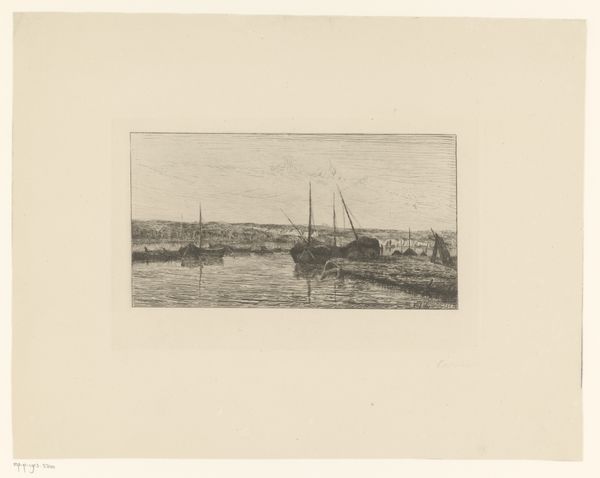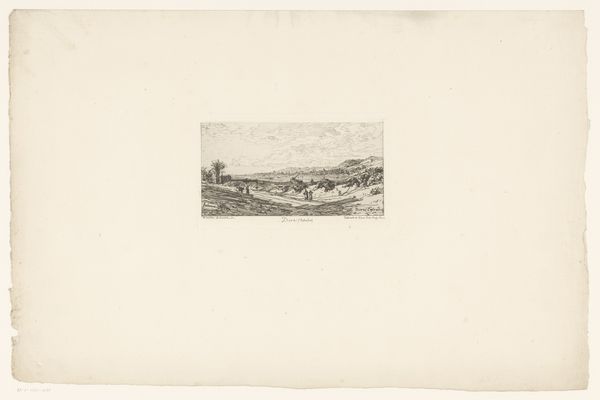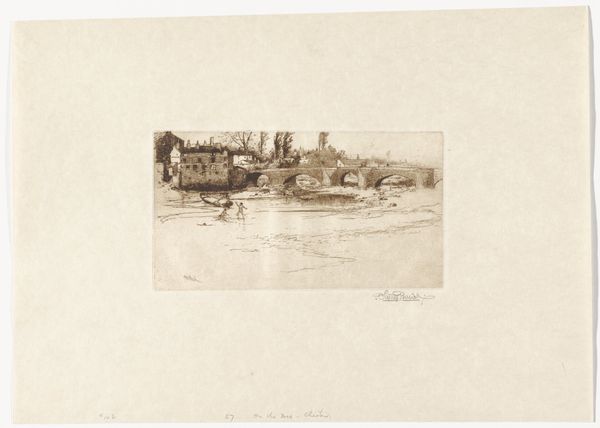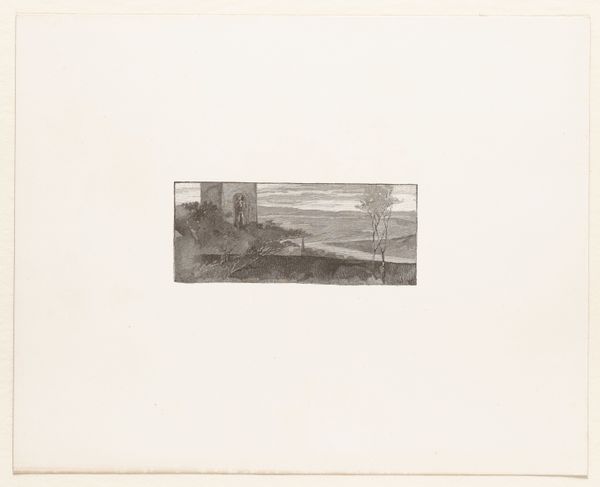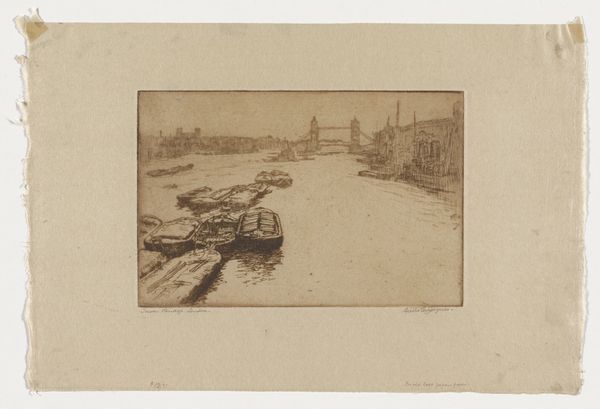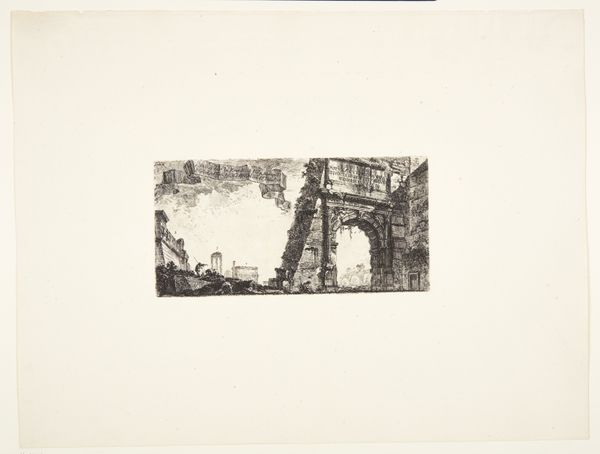
Senatorial bridge, today called the Broken Bridge 1748
0:00
0:00
print, etching, engraving
#
baroque
# print
#
etching
#
landscape
#
cityscape
#
italian-renaissance
#
engraving
Dimensions: 125 mm (height) x 257 mm (width) (plademaal)
Editor: This is Giovanni Battista Piranesi's "Senatorial Bridge, today called the Broken Bridge," an etching and engraving from 1748. The detail in the stonework is amazing, especially considering the printmaking process. How should we interpret this piece, particularly in relation to the materials and their context? Curator: Look closely at the etching. Consider the labor involved in creating such intricate details with metal plates and acid. Piranesi isn't just depicting a bridge; he's showcasing the human intervention on the landscape. Notice the contrast between the durable stone and the ephemeral nature of the etching itself – a tension between permanence and process. What does the "brokenness" of the bridge suggest about the society that produced it? Editor: It's interesting to think about the work that went into both the physical bridge and its artistic representation. I see decay and maybe a statement about the limitations of even the most ambitious construction projects. Do you think Piranesi is making a commentary on the Roman Empire through the bridge's state of disrepair? Curator: Precisely. The ruins become a material critique of power structures. Think about the consumption of these prints by wealthy Europeans on the Grand Tour. They’re buying not just a souvenir, but a carefully crafted representation of Roman decline, processed and packaged for their consumption. How does that commodification influence the work's meaning? Editor: So, it’s almost like Piranesi is mass-producing critiques of mass consumption! The bridge's ruin signifies something deeper than just physical damage. Curator: Exactly! The layering of material processes—the bridge's construction, its subsequent decay, Piranesi's etching, and its eventual purchase—reveals a complex narrative of labor, power, and consumption. Editor: That connection really shifts my understanding. I was so focused on the image, but understanding the process changes everything. Curator: It’s crucial to understand that art isn't just about aesthetics; it is equally important to consider it a product of material conditions. The social and material are always intertwined in the process of creation.
Comments
No comments
Be the first to comment and join the conversation on the ultimate creative platform.
